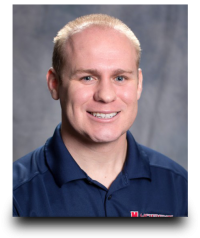Cumulative Trauma Disorders
Temecula – Cumulative Trauma Disorder Treatment
How Do Cumulative Trauma Disorders Occur?
Most of these problems associated to the occupational hazards of sign language interpreting are the direct cause of a CTD, also known as a repetitive stress injury (RSI), an overuse strain (OS), and occupational overuse syndrome (OOS). A CTD is cause by overuse of a certain muscle group and in the cause of extensor tendonitis, it is the muscles of the back of your forearm. Feel the back of your forearm and wiggle your fingers at the same time. First start with your index finger and progressively work down to your pinky finger, moving them one at a time. Do you feel different parts of your forearm moving? If you haven’t done this before, try it and you will begin to understand how intricate and how small these muscles are.
Now that you feel your muscles, just imagine them doing the same thing over and over again in the course of your day at work. It has been found that these small, repetitive, motions are the ones that are most harmful. Overuse causes micro-tears in the muscle, leading to inflammation, decreased circulation, edema and eventually a build-up of scar tissue. The scar tissue laid down is the body’s natural way of repairing itself, however this tissue is different from the original tissue, very similar to a scar on your skin. The new tissue is more fibrous than the last and it is laid down in a haphazard fashion causing adjacent structures to stick to each other. This is the beginning of the injury cycle where the muscles become progressively weak, tight, and no longer receive vital nutrients needed to repair it.
This process feeds upon itself, never allowing muscle relaxation to occur which is needed to properly recover. Neurological problems such as numbness and tingling into the hand occur as nerves become trapped in this bundle of fibrous tissue. Some people experience loss of grip strength, which can be attributed to problems with the forearm extensors.
What Are Some Treatment Options for a Cumulative Trauma Disorder?
Conventional treatments for CTD are: splinting, anti-inflammatory drugs, ultrasound, cold packs, and electrical stimulation. Surgery is sometimes suggested for patients with severe inflammation of the tendon or neurological involvement. If all of these treatments fail, what else can you do?
What Is the Most Effective Type of Treatment for a Cumulative Trauma Disorder?
Active Release Techniques® (ART®) is a relatively new soft tissue technique, which can be used to treat and cure a variety of conditions that would be normally treated with surgery or physical therapy, such as carpal tunnel syndrome, Dequervain’s syndrome, or extensor tendonitis of the forearm. Invented by Dr. Michael Leahy, it is technique, which can address problems involving muscles, ligaments, tendons, nerves and vasculature; in fact, it includes over 300 protocols for almost all the muscles in the body. It is also the first successful non-surgical method of treating nerve entrapments. But what can ART® do for a CTD?
In September 1999, a study was published in The Journal of Occupational Rehabilitation regarding the effectiveness of ART® in CTD cases of the upper extremity. An ART® provider, with only six months experience, was asked to treat 28 patients with epicondylitis, carpal tunnel, and tendonitis. All of the patients had tried medical treatment prior to the study with limited results. Results of the study revealed a 71% improvement rate within one to three months of treatment2.
ART® has been found to be a very effective treatment of CTD and it is also one that is least known. The mechanism by which ART® resolves CTDs is by breaking up the reoccurring cycle and letting the muscle relax, restoring the natural length-tension relationship. In fact, it is so effective that most patients have a significant change within the first 3 to 4 visits.
To schedule an appointment with Dr. Horst, contact us today.

Meet Dr. Horst
I am a true believer in the power of Chiropractic. I believe that the power that made the body can heal the body without the use of drugs.
Need Pain Relief?
Contact Us Today
To schedule an appointment
Call: 951-693-2208
– or –
Read What People
Are Saying About Us
Are Saying About Us

